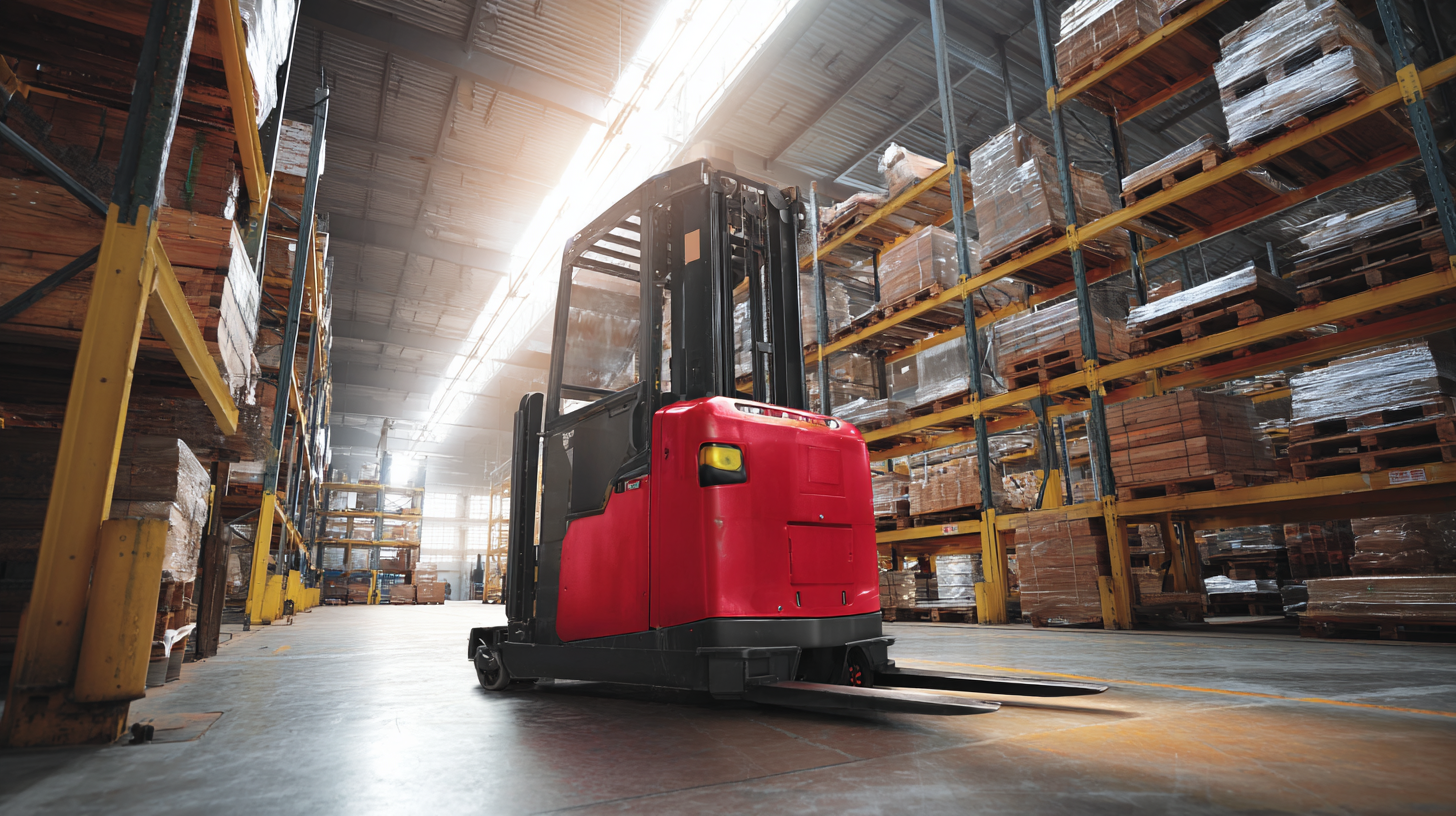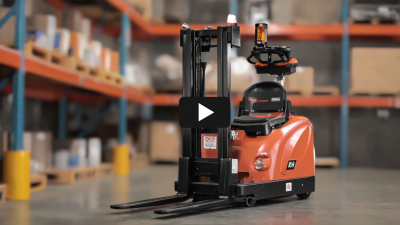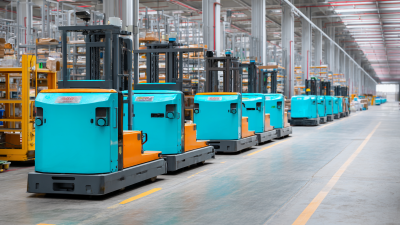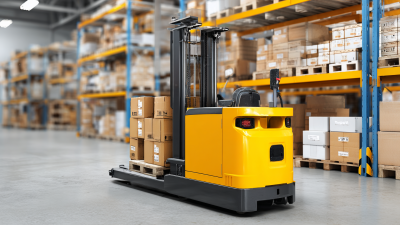Leave Your Message
In the fast-paced world of warehousing and logistics, the efficiency of material handling operations plays a crucial role in overall productivity. A recent report from the Material Handling Industry of America (MHIA) indicates that companies leveraging advanced material handling solutions, such as Powered Pallet Jacks, can see a productivity increase of up to 25%. As businesses continue to adapt to the ever-evolving demands of e-commerce and supply chain management, choosing the right equipment becomes paramount.
Powered Pallet Jacks, known for their ease of use and versatility, have emerged as essential tools for workers navigating busy warehouse environments. According to a 2022 study by the Occupational Safety and Health Administration (OSHA), the implementation of powered material handling equipment significantly reduces workplace injuries related to manual lifting, highlighting their importance in promoting safety while enhancing operational efficiency. With a variety of models and features available in the market, understanding how to choose the best Powered Pallet Jack tailored to specific warehouse needs can greatly influence not only safety but also overall productivity and cost-effectiveness.

When selecting the best powered pallet jack for your warehouse needs, understanding the different types available is crucial, especially in contexts like micro-fulfillment centers that are emerging in response to e-commerce demands. These facilities often face space constraints, making maneuverability and compact design paramount. For instance, compact powered pallet jacks, which can navigate narrow aisles easily, are highly recommended in such environments. A report from the Material Handling Industry (MHI) indicates that the demand for more efficient material handling equipment in limited spaces is projected to grow by over 15% in the next few years, emphasizing the need for specialized solutions.

Additionally, powered pallet jacks are increasingly incorporating advanced technologies aimed at enhancing safety and efficiency. Features such as integrated weight scales and smart drive systems can optimize load handling and reduce operational risks. As per industry research, nearly 30% of warehouses are adopting smart lift trucks with automated capabilities to improve their logistical operations. These innovations not only aid in efficient space utilization but also significantly enhance the productivity of warehouse operations, adapting well to the evolving challenges of modern logistics.
When selecting a powered pallet jack for your warehouse, it’s crucial to consider key features that align with your operational needs. First and foremost, assess the load capacity of the jack. Standard powered pallet jacks can handle loads ranging from 2,500 to 5,500 pounds. Make sure to choose a model that can accommodate your heaviest items without compromising safety or efficiency.
Another essential feature to contemplate is the power source. Powered pallet jacks typically come in electric and propane options. Electric models are quieter and suitable for indoor use, while propane versions are more powerful and ideal for outdoor operations. Consider your warehouse layout and how often you will use the jack to determine the most appropriate power source.
**Tip:** Pay attention to the length and width of the forks. A wider fork can distribute weight more evenly, which is beneficial for handling bulkier items. Additionally, ergonomic features such as adjustable handles and intuitive control systems can enhance operator comfort and productivity during long shifts. Always prioritize features that not only improve functionality but also ensure the safety of your workforce.
When selecting a powered pallet jack for your warehouse, assessing weight capacity and performance is crucial. The weight capacity of a pallet jack typically ranges from 2,000 to 6,000 pounds. It’s essential to evaluate the maximum weight you expect to handle daily. Overloading a pallet jack not only decreases its lifespan but can also lead to safety hazards within your warehouse. Therefore, ensure the model you choose can comfortably manage your heaviest loads while remaining within a safe margin of its capacity.
Performance factors such as speed, maneuverability, and battery life also play a significant role in meeting your warehouse needs. A pallet jack that can travel at higher speeds will enhance productivity, especially during peak hours. Additionally, consider the turning radius and overall layout of your warehouse; a compact jack may be necessary for tight aisles. Battery life should not be overlooked either; opting for a model with durable battery performance will minimize downtime and help maintain operational efficiency. Balancing these weight and performance factors will ensure you select a powered pallet jack that effectively supports your daily operations.
| Model | Weight Capacity (lbs) | Lift Height (in) | Battery Type | Running Time (hrs) | Turning Radius (in) |
|---|---|---|---|---|---|
| Model A | 4,500 | 7.5 | Lithium-ion | 8 | 54 |
| Model B | 5,000 | 8 | Lead-acid | 6 | 60 |
| Model C | 3,000 | 6 | Lithium-ion | 10 | 50 |
| Model D | 4,000 | 7 | Lead-acid | 7 | 58 |
When selecting a powered pallet jack for your warehouse, the battery life and charging options are crucial factors that can significantly influence operational efficiency. The longevity of the battery determines how long the equipment can run before needing a recharge, directly impacting your workflow. A powered pallet jack with a robust battery should be able to handle multiple shifts without requiring frequent downtime for charging. This ensures that your team can perform tasks like loading and unloading without interruptions, ultimately leading to increased productivity.
In addition to battery life, the charging options available also play an essential role in the utility of a powered pallet jack. Look for models that offer fast-charging capabilities or the option for multiple charging stations. This flexibility allows for quick recharges during breaks or shift changes, minimizing idle time. Additionally, consider whether the jack has features such as smart charging technology that optimizes battery health and efficiency. By prioritizing these aspects, you can ensure that your powered pallet jack meets the demands of your warehouse environment while maintaining optimal performance.
When selecting a powered pallet jack, balancing price and value is crucial for optimizing warehouse operations. According to a recent report by the Material Handling Industry of America (MHIA), businesses can expect to pay between $5,000 and $7,000 for a mid-range powered pallet jack. However, investing in quality equipment often leads to long-term savings; well-built jacks can reduce downtime and repair costs significantly, with some models boasting durability ratings above 10,000 operating hours.
**Tip:** Before purchasing, assess your warehouse layout and the weight capacity you'll need. Ensure the pallet jack matches the specific load capacities, which typically range from 2,200 to 8,000 lbs. Mismatch in capabilities can result in costly inefficiencies.
Additionally, consider the total cost of ownership, which includes maintenance, training, and energy consumption. A study by the National Institute of Standards and Technology (NIST) indicates that energy-efficient models can save businesses upwards of 20% on operational costs.
**Tip:** Look for models with advanced features, such as ergonomic designs and improved battery technologies, as these can enhance productivity and operator satisfaction while maintaining budget constraints.







